My Canon 5D Mark II loves taking pictures in the dark, so it dragged me out to the middle of the desert on a clear night during a new moon. I was interested in getting some images of the summer Milky Way, too, and this seemed like a perfect opportunity!
The darkest skies within a reasonable distance from Los Angeles are probably those in the Death Valley region, in which you can find yourself 50 to 100 miles from a town of any size, and 100 to 200 miles from the gaudy lights of L.A., the Antelope Valley, Vegas, and Fresno. That requires a 4 to 5-hour drive from my house, and more than 100 bucks in gas—boo hiss. Plan Two—go to mom’s place, a little over 2 hours away! On this Monday I was visiting my mom at her home in Palm Desert. The Milky Way is dimly visible just outside her back door on most nights, but my 30-second exposure of the sky from here showed more light pollution than Milky Way. I needed to get farther away from the L.A. megalopolis and the towns in the Coachella Valley.
At 7 p.m. I headed east on Interstate 10. There is basically nothing along I-10 between Indio and Blythe, except for tiny Desert Center. I wasn’t too concerned with the local light pollution at Desert Center, so that was my Milky Way target site! About 50 miles from Palm Desert and Indio I came into Desert Center, and the Milky Way was blazing across the sky—YES! I stopped in town to snap a couple of shots, and then headed north on Route 177. The lights of Desert Center were a tad annoying, so it seemed prudent to set up a little farther north, on the east side of Joshua Tree National Park. I went about 15 miles NNE on 177, a few miles past the jog where 177 goes from northeast to more to the north. I pulled off to the west side of 177 into the tiny flat parking area for a communications tower. I set up where the very tall tower was to my east, and not in the way of my precious Milky Way. A light was illuminated on the little building next to the tower — what was up with that?! A couple of minutes later it was off—I think it went on when a sensor detected my vehicle motion.
The night sky here was very, very nice and quite dark, though not quite as dark as the Death Valley area, as I expected. The L.A. region and Coachella Valley are still a little too close for Death Valley-like skies, and there was a dim glow to the west and southwest. I was happy, nonetheless! I even saw a couple of bright meteors diving towards the southwest in my first minute or two here.
I plopped the 5D onto the tripod and shot mostly 25 to 30-second exposures at f2.8 with my 16-35 and 28-70mm lenses. The star trails aren’t too obnoxious at 30 seconds at 16mm. I had the ISO set from about 1600 to 2400. Any higher than that, and the grain issues increase to unacceptable levels. (Obviously, if I had had my Celestron telescope set up here, I could have taken longer exposures at lower ISOs by piggy-backing the camera to the scope and tracking the stars.) I shot the sky to the southwest, where the Milky Way was nose-diving into the horizon. I took a handful of the Milky Way in the “summer triangle” area that was nearly overhead (Vega/Deneb/Altair), plus a couple of the Big Dipper, on the horizon to the north, and the Andromeda Galaxy and vicinity up in the northeast.
By the way, the weather here was quite pleasant, with light winds and a temperature in the mid-80s. There were some annoying small bugs around, though, that were intent on landing on my arms and legs. I didn’t wind up with any mosquito bites, so apparently they were harmless! I spent about 90 minutes here, and then went back to nearby 177 and shot a few “down-the-road” shots towards Desert Center and the I-10 corridor. I flashed my high beams for a half second to light up the foreground.
By the way, the “comments” on Stormbruiser have been closed up until recently. I have opened up the comments section —- so feel free to chime in if you have something to say. Let me know, too, if you have any trouble posting a comment (my e-mail is bill@stormbruiser.com).
Above—two images in Desert Center, and three towards the southwest horizon, where Sagittarius is setting.
Above—the summer triangle region, Sagittarius, a meteor through the Milky Way, and a wide view to the southwest with the Milky Way above the urban glow of the Coachella Valley and L.A.
Above—the Andromeda Galaxy and vicinity, the Big Dipper, Lyra, and the Milky Way in the summer triangle region (including the constellations Cygnus, Lyra, and Aquila)
Above—a view to the southwest along 177 towards Desert Center

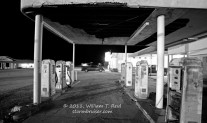

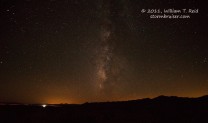

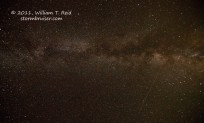
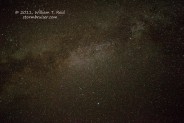


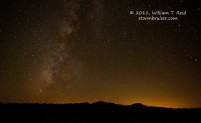

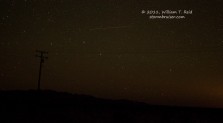
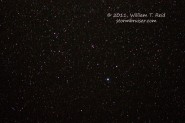
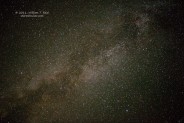
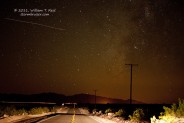
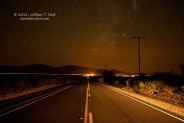


Leave a Reply
You must be logged in to post a comment.